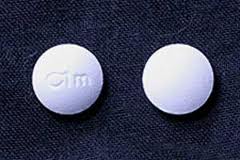What is Acetohydroxamic Acid?
 Acetohydroxamic acid works by preventing bacteria from increasing ammonia levels in urine. Increased ammonia in urine can lead to a certain type of kidney stone.
Acetohydroxamic acid works by preventing bacteria from increasing ammonia levels in urine. Increased ammonia in urine can lead to a certain type of kidney stone.
Acetohydroxamic acid is used together with antibiotics to treat bladder infections caused by bacteria that can increase ammonia levels in the urine.
Acetohydroxamic acid may also be used for other purposes not listed in this medication guide.
What is the most important information I should know about Acetohydroxamic Acid?
This medication can cause birth defects. Do not use if you are pregnant. Use effective birth control, and tell your doctor if you become pregnant during treatment.
Before using acetohydroxamic acid, tell your doctor if you have kidney disease, a history of blood clot or stroke, hemolytic anemia (a lack of red blood cells), or a weak immune system.
Take acetohydroxamic acid on an empty stomach, at least 1 hour before or 2 hours after a meal. Acetohydroxamic acid is usually taken 3 or 4 times daily. Follow your doctor’s instructions.
Take this medication for the full prescribed length of time. Your symptoms may improve before the infection is completely cleared. Acetohydroxamic acid is not an antibiotic and will not treat a bacterial infection alone. Take your antibiotic medication as directed.
Avoid drinking alcohol. Drinking alcohol while taking this medication can cause you to have warmth, redness, or tingling under your skin. This may be an unpleasant side effect.
Call your doctor at once if you have a serious side effect such as chest pain, fast or pounding heartbeats, pale or yellowed skin, dark colored urine, fever, confusion or weakness, mood changes, confusion, anxiety, tremors or shaking, easy bruising or bleeding, flu symptoms, or pain or swelling in one or both legs.
What should I discuss with my healthcare provider before taking Acetohydroxamic Acid?
Before using acetohydroxamic acid, tell your doctor if you are allergic to any drugs, or if you have:
- kidney disease
- a history of blood clot or stroke
- hemolytic anemia (a lack of red blood cells); or
- a weak immune system
If you have any of these conditions, you may need a dose adjustment or special tests to safely use acetohydroxamic acid.
FDA pregnancy category X. This medication can cause birth defects. Do not use acetohydroxamic acid if you are pregnant. Tell your doctor right away if you become pregnant during treatment. Use effective birth control while you are using this medication.
Acetohydroxamic acid may pass into breast milk and may harm a nursing baby. Do not use this medication without telling your doctor if you are breast-feeding a baby.
Acetohydroxamic Acid Side Effects
What are the possible side effects of Acetohydroxamic Acid?
Get emergency medical help if you have any of these signs of an allergic reaction: hives; difficulty breathing; swelling of your face, lips, tongue, or throat.
Call your doctor at once if you have a serious side effect such as:
- chest pain, fast or pounding heartbeats
- pale or yellowed skin, dark colored urine, fever, confusion or weakness
- mood changes, confusion, anxiety
- tremors or shaking
- easy bruising or bleeding
- sore throat, body aches, flu symptoms; or
- pain or swelling in one or both legs
Less serious side effects may include:
- mild nausea, vomiting, upset stomach
- loss of appetite
- headache; or
- hair loss
This is not a complete list of side effects and others may occur. Tell your doctor about any unusual or bothersome side effect. You may report side effects to FDA at 1-800-FDA-1088.
Acetohydroxamic Acid Interactions
What other drugs affect Acetohydroxamic Acid?
There may be other drugs that can interact with acetohydroxamic acid. Tell your doctor about all your prescription and over-the-counter medications, vitamins, minerals, herbal products, and drugs prescribed by other doctors. Do not start a new medication without telling your doctor.
What should I avoid while taking Acetohydroxamic Acid?
Avoid drinking alcohol. Drinking alcohol while taking this medication can cause you to have warmth, redness, or tingling under your skin. This may be an unpleasant side effect.
Avoid taking vitamin or mineral supplements that contain iron, unless your doctor has told you to.
Acetohydroxamic Acid Dosage
How should I take Acetohydroxamic Acid?
Take this medication exactly as prescribed by your doctor. Do not take it in larger amounts or for longer than recommended. Follow the directions on your prescription label.
Take acetohydroxamic acid on an empty stomach, at least 1 hour before or 2 hours after a meal.
Acetohydroxamic acid is usually taken 3 or 4 times daily. Follow your doctor’s instructions.
Take this medication for the full prescribed length of time. Your symptoms may improve before the infection is completely cleared. Acetohydroxamic acid is not an antibiotic and will not treat a bacterial infection alone. Take your antibiotic medication as directed.
To be sure this medication is not causing harmful effects, your blood may need to be tested on a regular basis. Do not miss any scheduled appointments.
Store acetohydroxamic acid at room temperature away from moisture and heat.
What happens if I overdose on Acetohydroxamic Acid?
Seek emergency medical attention if you think you have used too much of this medicine.
Overdose symptoms may include weakness, loss of appetite, nausea, vomiting, or tremors.
What happens if I miss a dose of Acetohydroxamic Acid?
Take the missed dose as soon as you remember. If it is almost time for your next dose, wait until then to take the medicine and skip the missed dose. Do not take extra medicine to make up the missed dose.
Remember to acetohydroxamic acid on an empty stomach.
Sourced from everydayhealth.com
